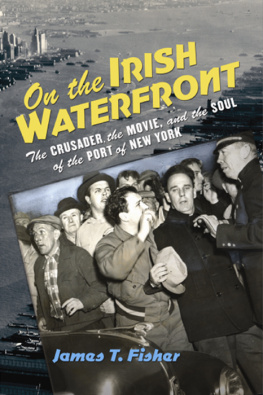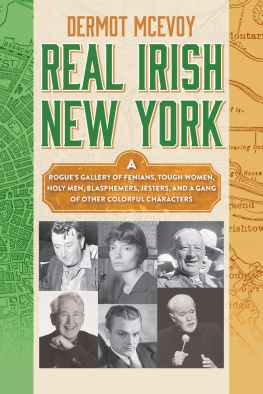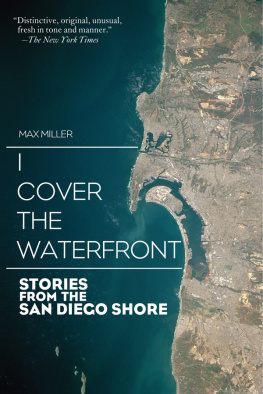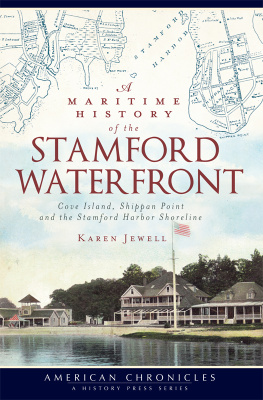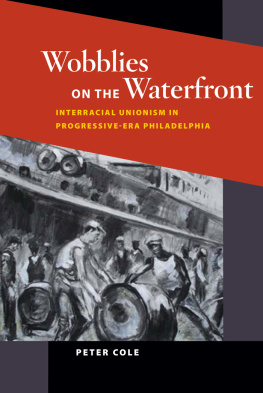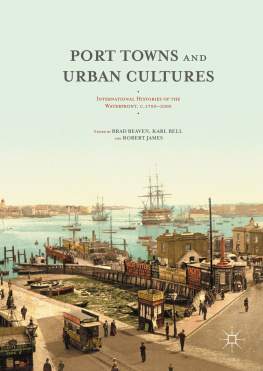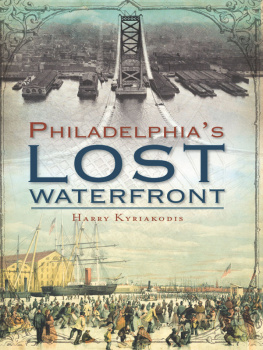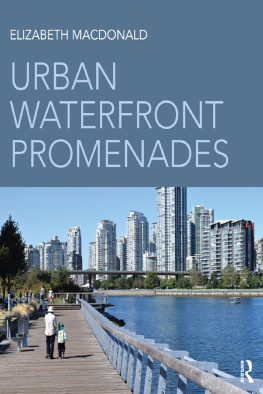James T. Fisher - On the Irish Waterfront: The Crusader, the Movie, and the Soul of the Port of New York
Here you can read online James T. Fisher - On the Irish Waterfront: The Crusader, the Movie, and the Soul of the Port of New York full text of the book (entire story) in english for free. Download pdf and epub, get meaning, cover and reviews about this ebook. year: 2011, publisher: Cornell University Press, genre: Non-fiction. Description of the work, (preface) as well as reviews are available. Best literature library LitArk.com created for fans of good reading and offers a wide selection of genres:
Romance novel
Science fiction
Adventure
Detective
Science
History
Home and family
Prose
Art
Politics
Computer
Non-fiction
Religion
Business
Children
Humor
Choose a favorite category and find really read worthwhile books. Enjoy immersion in the world of imagination, feel the emotions of the characters or learn something new for yourself, make an fascinating discovery.
- Book:On the Irish Waterfront: The Crusader, the Movie, and the Soul of the Port of New York
- Author:
- Publisher:Cornell University Press
- Genre:
- Year:2011
- Rating:3 / 5
- Favourites:Add to favourites
- Your mark:
On the Irish Waterfront: The Crusader, the Movie, and the Soul of the Port of New York: summary, description and annotation
We offer to read an annotation, description, summary or preface (depends on what the author of the book "On the Irish Waterfront: The Crusader, the Movie, and the Soul of the Port of New York" wrote himself). If you haven't found the necessary information about the book — write in the comments, we will try to find it.
Site of the worlds busiest and most lucrative harbor throughout the first half of the twentieth century, the Port of New York was also the historic preserve of Irish American gangsters, politicians, longshoremens union leaders, and powerful Roman Catholic pastors. This is the demimonde depicted to stunning effect in Elia Kazans On the Waterfront (1954) and into which James T. Fisher takes readers in this remarkable and engaging historical account of the classic films backstory.
Fisher introduces readers to the real Father Pete Barry featured in On the Waterfront, John M. Pete Corridan, a crusading priest committed to winning union democracy and social justice for the ports dockworkers and their families. A Jesuit labor school instructor, not a parish priest, Corridan was on but not of Manhattans West Side Irish waterfront. His ferocious advocacy was resisted by the very men he sought to rescue from the violence and criminality that rendered the port a jungle, an outlaw frontier, in the words of investigative reporter Malcolm Johnson.
Driven off the waterfront, Corridan forged creative and spiritual alliances with men like Johnson and Budd Schulberg, the screenwriter who worked with Corridan for five years to turn Johnsons Pulitzer Prize-winning 1948 newspaper expos into a movie. Fishers detailed account of the waterfront priests central role in the films creation challenges standard views of the film as a post facto justification for Kazan and Schulbergs testimony as ex-communists before the House Committee on Un-American Activities.
On the Irish Waterfront is also a detailed social history of the New York/New Jersey waterfront, from the rise of Irish American entrepreneurs and political bosses during the World War I era to the mid-1950s, when the emergence of a revolutionary new mode of cargo-shipping signaled a radical reorganization of the port. This book explores the conflicts experienced and accommodations made by an insular Irish-Catholic community forced to adapt its economic, political, and religious lives to powerful forces of change both local and global in scope.
James T. Fisher: author's other books
Who wrote On the Irish Waterfront: The Crusader, the Movie, and the Soul of the Port of New York? Find out the surname, the name of the author of the book and a list of all author's works by series.

